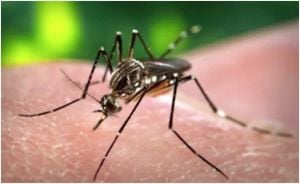Traffic-related incidents continue to be a leading cause of concern for authorities and communities. Every day, vehicles dart across roads, and unfortunately, accidents can happen in the blink of an eye. These incidents range from minor fender benders to serious collisions, sometimes resulting in dire consequences.
The latest statistics show staggering numbers of traffic-related fatalities and injuries each year. According to the National Highway Traffic Safety Administration, every year, approximately 38,000 people die from vehicle-related accidents across the United States alone. That's nearly 100 lives lost every single day, creating heartbreak and loss for countless families.
One of the more alarming trends is the increase in pedestrian fatalities. Reports indicate there's been about a 10% rise over the last couple of years, catching the attention of safety advocates and urban planners alike. Cities are becoming increasingly cluttered with vehicles, and as they expand, the potential for accidents increases. Streets are not just pathways for cars but also shared spaces for pedestrians, cyclists, and public transport users. This changing dynamic calls for urgent action to improve road safety.
Weather conditions also play a significant role in traffic safety. Rain, snow, and fog reduce visibility, making driving conditions far more precarious. Studies highlight how adverse weather can triple the risk of road collisions. For example, driving on icy roads can be treacherous, leading many drivers to underestimate the danger. Take, for example, the snowstorm last winter, which caused multiple pileups across several states, leaving many motorists stranded and injured.
Technology has been adapting to keep pace with these traffic threats. Many newer vehicles come equipped with advanced safety features such as automatic emergency braking, lane-keeping assist, and adaptive cruise control. These innovations aim to mitigate human error, which is responsible for roughly 94% of all car accidents. With such advancements, there is hope for reducing the number of accidents and saving lives.
Despite the technological improvements, distracted driving remains one of the most significant challenges on the roads today. With smartphones becoming ubiquitous, the temptation to text or browse social media can often be too great. The Centers for Disease Control and Prevention reports thousands of lives lost and many more affected due to distractions behind the wheel. Efforts to curb this behavior, like public awareness campaigns and strict regulations against texting and driving, are underway, but the struggle continues.
Community involvement is also key to improving road safety. Neighborhoods can actively participate by advocating for safer crosswalks, speed bumps, and more visible signage. Areas with active community planning and safety campaigns have often seen tangible results, with decreased accident rates. This local action can create significant ripple effects, contributing to safer streets for everyone.
Then there's the effect of drunk driving, which remains another pressing issue. Despite years of public awareness campaigns and designated driver initiatives, the problem persists. The National Institute on Alcohol Abuse and Alcoholism cites around 10,000 deaths annually attributed to impaired driving. Each of these tragedies impacts families and communities, and the grip of this issue is something authorities have to keep addressing with vigor.
Interventions can take many forms. Law enforcement agencies are involved at multiple levels, from sobriety checkpoints to educational programs aimed at high schools and colleges. The message is clear: driving under the influence is irresponsible and dangerous.
Being proactive about road safety has never been more relevant. Accidents can cause enormous ripple effects, not just for those directly involved but their families, friends, and communities as well. Every minor incident—a ding, bump, or near-miss—cumulatively adds to the narrative of road safety. While it may seem trivial on its own, we must see the big picture.
So how do we, as individuals, play our part? The answer is simple: Stay aware and engaged on the roads. Whether you’re driving, biking, or just walking, awareness is key. Look out for others, follow traffic laws, and never be too absorbed in your distractions.
Traffic incidents are more than just numbers; they are personal stories, heartbreaking losses, and life-altering events. By prioritizing road safety and advocating for each other, we can take meaningful steps to reduce these incidents. It’s up to each of us to help make our streets safer, one mindful action at a time.



